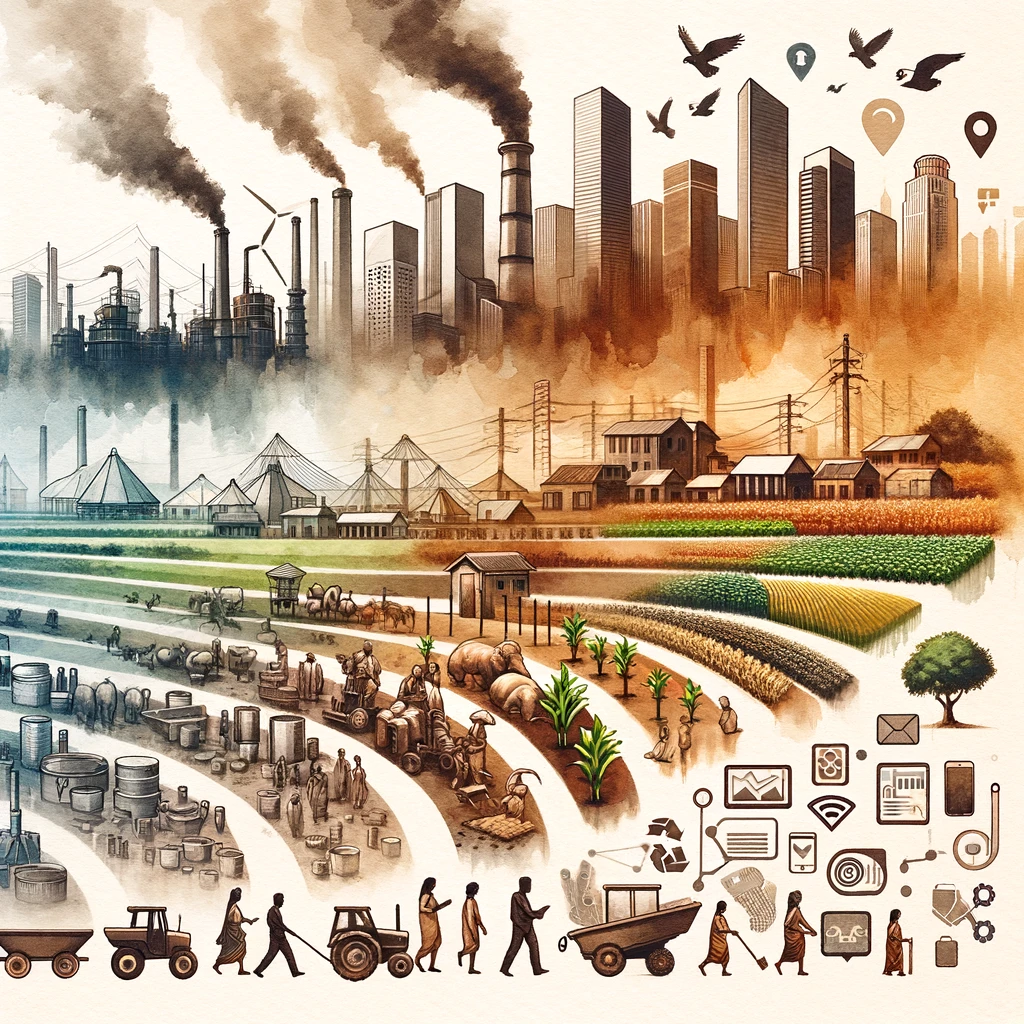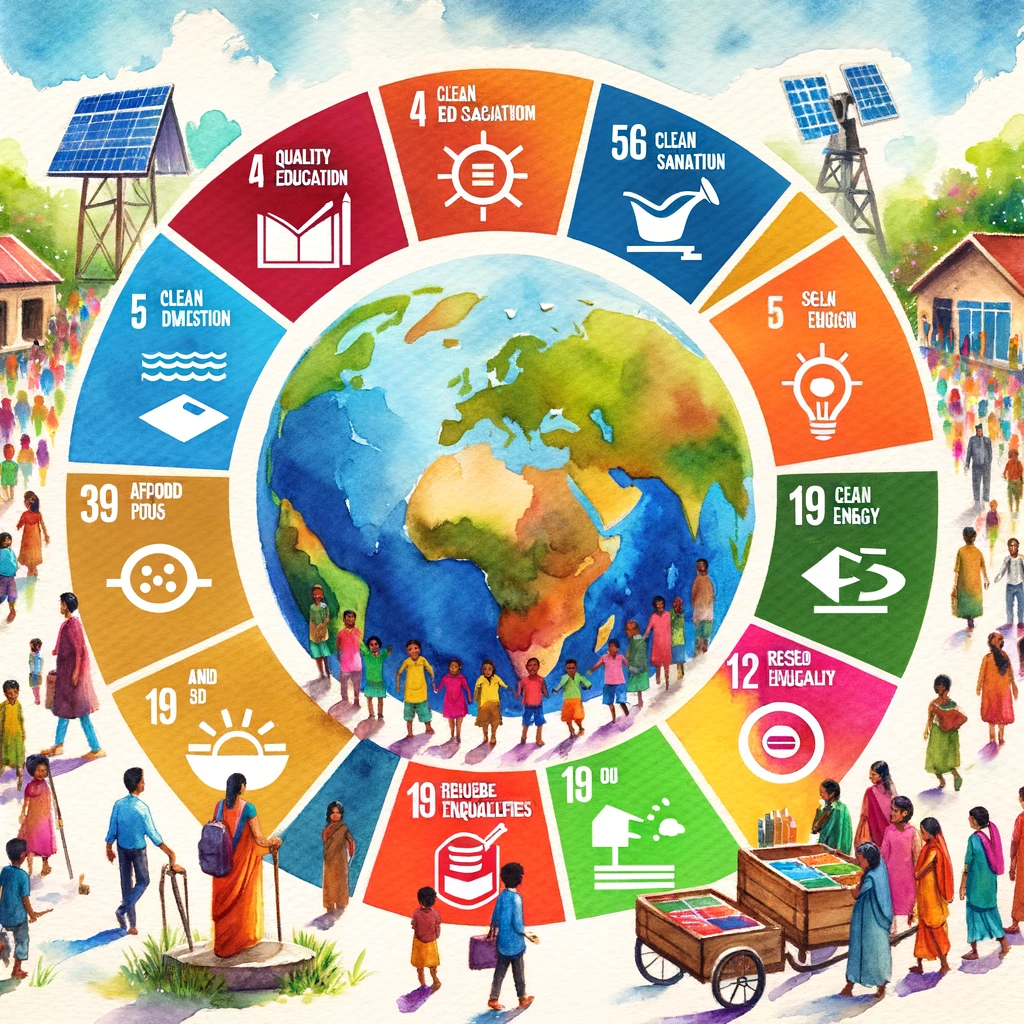Key Development Indicators: HDI, GINI, MPI, etc.
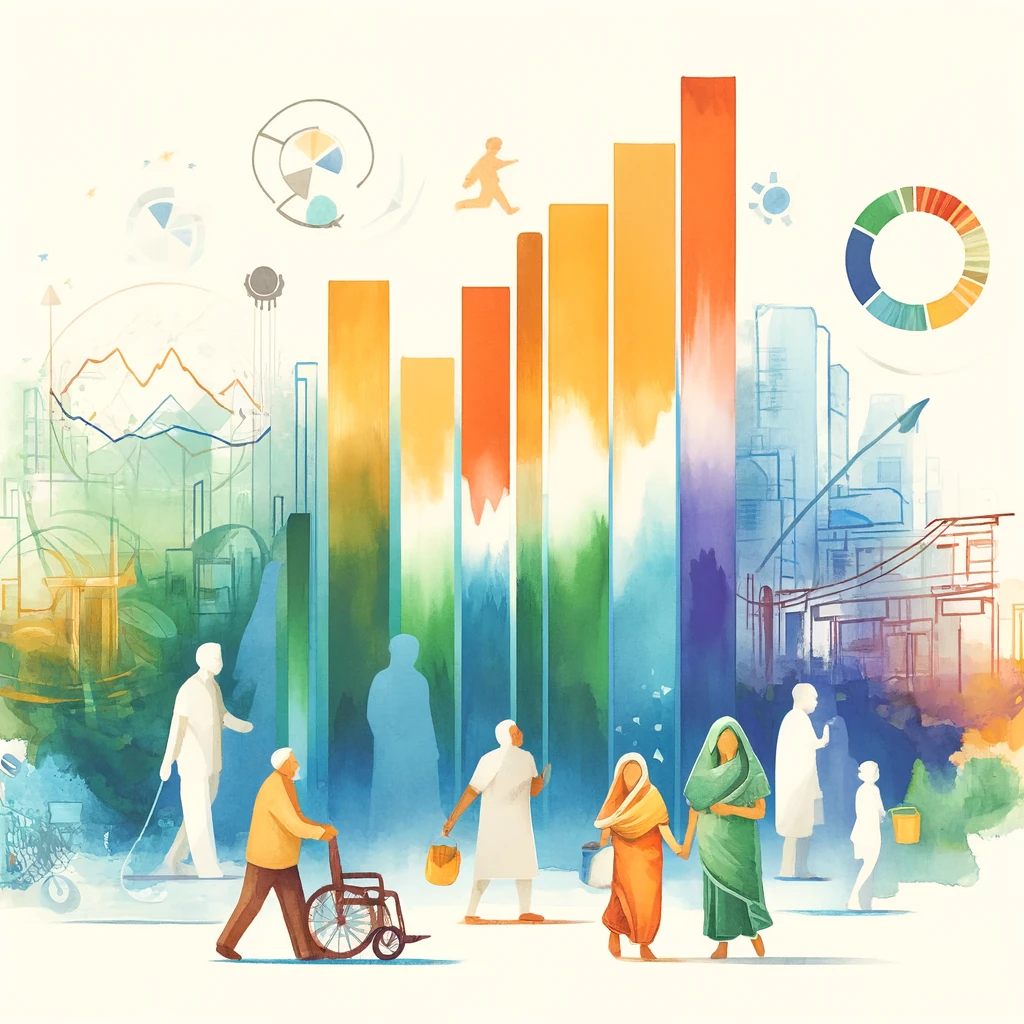
Human Development Index (HDI)
The Human Development Index (HDI) is a composite statistic that measures a country’s average achievements in three basic aspects of human development: health (life expectancy at birth), education (mean years of schooling and expected years of schooling), and standard of living (gross national income per capita). The HDI ranges from 0 to 1, with higher values indicating higher levels of human development.
Importance:
HDI provides a broader understanding of development beyond just economic growth, encompassing health and education as crucial components of human well-being.
GINI Coefficient
The GINI coefficient is a measure of income inequality within a population, ranging from 0 to 1. A GINI coefficient of 0 represents perfect equality, where everyone has the same income, while a coefficient of 1 indicates perfect inequality, where one person has all the income.
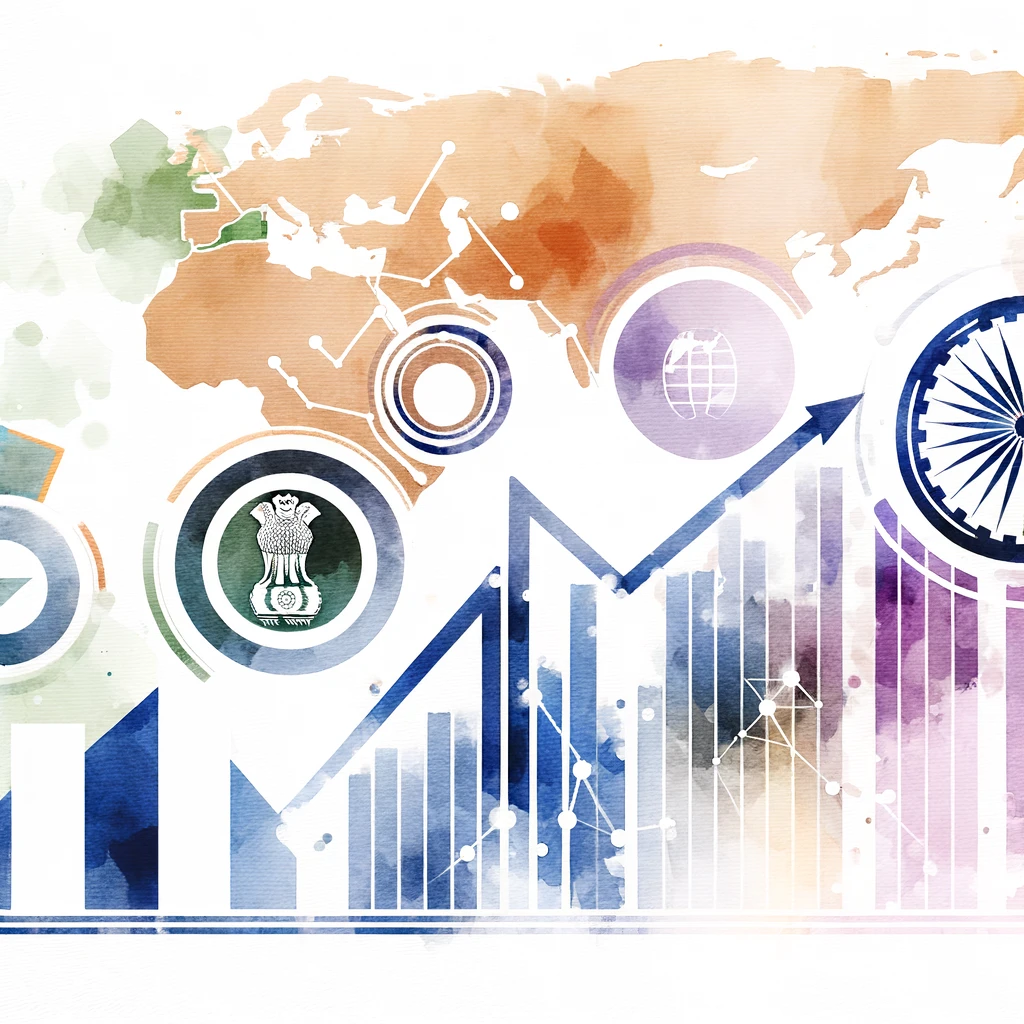
Importance:
The GINI coefficient highlights income disparities within a country, helping policymakers address issues of inequality and social justice.
Multidimensional Poverty Index (MPI)
The Multidimensional Poverty Index (MPI) assesses poverty beyond income, incorporating various deprivations in health, education, and living standards. It measures the percentage of people who are multidimensionally poor, capturing the depth and intensity of poverty.
Importance:
MPI provides a more comprehensive picture of poverty, identifying overlapping deprivations that individuals or households experience.
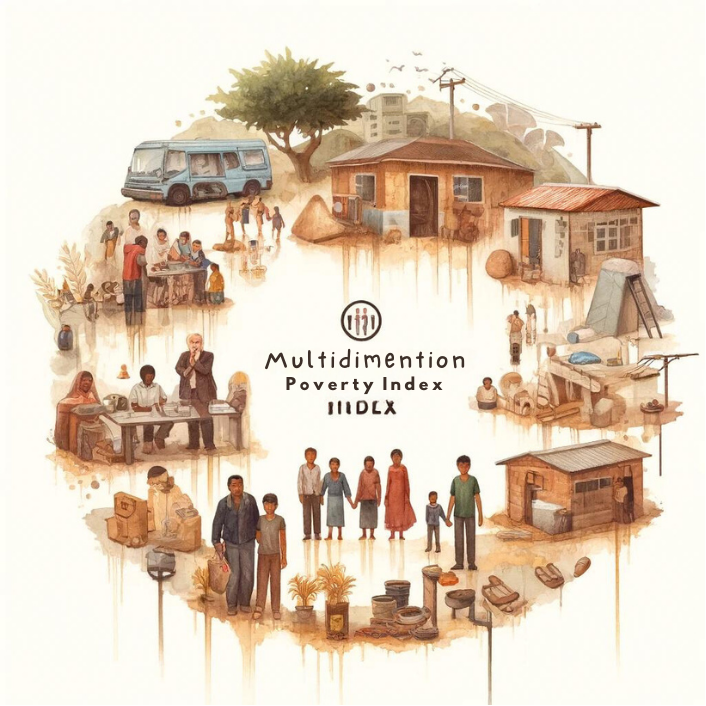
Latest Statistics for India:
- HDI (2021): 0.645 (Ranked 131 out of 189 countries)
- GINI Coefficient (2019): 0.35
- MPI (2021): 27.9% of the population is multidimensionally poor
Comparison with Other Developing Countries:
India’s HDI of 0.645 places it in the medium human development category, similar to countries like Bangladesh and Pakistan. However, it lags behind China and Brazil, which have HDI values of 0.761 and 0.765, respectively. The GINI coefficient indicates moderate income inequality compared to Brazil’s 0.53, highlighting the need for more inclusive growth. The MPI reveals a significant portion of India’s population faces multiple deprivations, reflecting the challenges in eradicating poverty.
Analysis of India’s Performance on Global Indices
India’s Ranking on Various Global Development Indices
- Global Hunger Index (2021): Ranked 101 out of 116 countries
- World Happiness Report (2021): Ranked 139 out of 149 countries
- Global Gender Gap Report (2021): Ranked 140 out of 156 countries
Areas of Strength and Improvement
Strengths:
- Economic Growth: Consistent GDP growth, particularly in the service sector.
- Digital Advancement: Rapid digitalization, particularly in financial services and e-governance.
- Renewable Energy: Significant progress in expanding renewable energy capacity.
Areas Needing Improvement:
- Health and Nutrition: High levels of malnutrition and inadequate healthcare infrastructure.
- Education: Low literacy rates and educational attainment, particularly among marginalized groups.
- Gender Equality: Significant gender disparities in economic participation and educational attainment.
Reasons Behind India’s Performance
- Strengths:
- Robust economic policies driving growth.
- Government initiatives like Digital India and the National Solar Mission.
- Demographic dividend providing a young and dynamic workforce.
- Challenges:
- Persistent socio-economic inequalities.
- Inadequate investment in health and education sectors.
- Cultural and structural barriers to gender equality.
Regional Disparities in Development
Identifying Regions with Significant Disparities
Regions like Kerala and Tamil Nadu exhibit high HDI values due to better health and educational outcomes, while states like Bihar, Uttar Pradesh, and Jharkhand lag significantly behind.
Causes of Regional Disparities
- Historical Factors: Legacy of colonial policies and uneven industrial development.
- Economic Policies: Differential allocation of resources and investment.
- Social Inequality: Varied social structures and levels of social capital.
- Governance: Variations in governance quality and policy implementation.
Impact of Regional Disparities on National Development
Regional disparities hinder overall national development by creating pockets of underdevelopment, reducing economic efficiency, and exacerbating social tensions. Addressing these disparities is crucial for achieving inclusive growth and national cohesion.
Impact of Social Sector Spending on Development
Role of Social Sector Spending in Development
Social sector spending, particularly in education and health, is vital for improving human capital, reducing poverty, and promoting inclusive growth. It leads to better health outcomes, higher educational attainment, and increased productivity.
Government Spending in Social Sectors
- Education: The government allocated approximately 3.1% of GDP to education in the 2021-22 budget.
- Health: Health expenditure was around 1.8% of GDP in the same period, with initiatives like Ayushman Bharat aiming to enhance healthcare access.
Effectiveness of Social Sector Spending
Effective social sector spending has led to improvements in literacy rates, life expectancy, and poverty reduction. However, challenges remain in ensuring equitable distribution and efficient utilization of resources.
Future Prospects for Improving Development Indicators
Potential Strategies for Improvement
- Increased Investment: Enhance budget allocations for health, education, and social protection programs.
- Strengthening Governance: Improve governance and administrative capacity to ensure effective implementation of development programs.
- Targeted Interventions: Focus on vulnerable groups and backward regions to bridge development gaps.
Role of Technology and Innovation
Technology and innovation can drive improvements in development indicators through:
- E-Governance: Enhancing transparency, efficiency, and accountability in service delivery.
- Digital Education: Expanding access to quality education through online platforms.
- Telemedicine: Improving healthcare access, especially in remote areas.
Policy Recommendations for Sustainable Development
- Holistic Approach: Integrate economic, social, and environmental policies for balanced development.
- Public-Private Partnerships: Leverage private sector expertise and investment in social sector initiatives.
- Community Participation: Engage local communities in planning and implementation to ensure programs meet their needs and build local capacity.
By adopting these strategies and focusing on inclusive, sustainable development, India can significantly improve its development indicators and ensure a higher quality of life for all its citizens.


